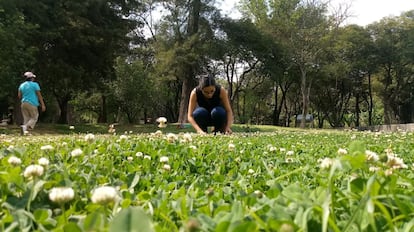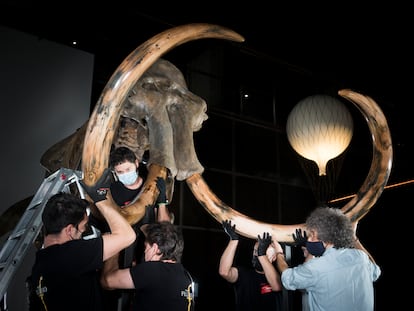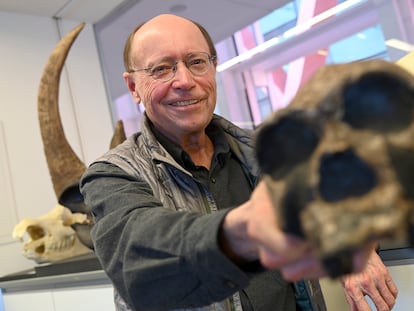A tiny plant shows how urban environments are affecting natural evolution
A global study finds that white clover is less likely to produce a defense chemical in city centers than if it grows in rural settings

Cities only take up 3% of the Earth’s landmass (although this could rise to 5% by the end of the century) yet they are one of the main human-made scars on the planet, along with deforestation and agriculture. But how does this affect other living creatures?
A new study of a tiny plant that’s found all over the planet shows that urban settings are affecting the evolution of the species: populations of white clover in cities across the world resemble each other more than they resemble the white clover in nearby fields.
Trifolium repens is native to Europe but has extended across the planet, aided by Western explorers’ own colonization drives. It is used as a forage crop in many parts of the world, and considered a weed in others. It grows spontaneously in urban settings, taking up space from cultivated species in parks and gardens.
In a bid to find out how plants adapt to city environments, a group of 287 scientists working in 160 cities and their surroundings collected over 110,000 white clover plants and sequenced 2074 genomes. The results of the study have been published in the journal Science.
One of the cities included in the study is Newcastle in Australia. Located 101 miles (162 kilometers) north of Sydney, there are a lot of green areas to collect samples from. “There’s a lot more parks that in my home town of Almería [in southeastern Spain],” says José Raúl Román, a scientist who participated in the study as a visiting scholar in Australia. “There’s white clover everywhere.”

Román and another Spanish colleague, Miriam Muñoz Rojas of Seville University (who was teaching at University of New South Wales at the time), traveled from Newcastle’s city center to the outskirts, gathering samples as they went and noting each sample’s location. Then they tested the leaves for the presence of hydrogen cyanide, a natural anti-herbivore defense that the white clover releases when it is being attacked by, say, a worm or a ladybug. Its production is controlled by two genes, and it is also triggered when the plant is experiencing drought stress.
Although most plants are able to produce this chemical, there are alleles (gene variants) that do not pass on this ability to descendants. Whether one allele prevails over another depends to a great degree on pressure from the immediate environment. It’s the game of life, adaptation through natural selection.
The Spanish scientists living in Australia sent their results to a lab at Toronto University Mississauga (Canada), where a team led by Marc Johnson analyzed these and other samples sent in from Medellín, Tehran, Cape Town, Antwerp and 155 other cities around the globe.
Evolution used to be slow and staggered, but now it is speeding up and happening over very short periods of timeMiriam Muñoz Rojas, Seville University
Of the 160 sampled cities, 47% (75 of them) showed changes in the clover’s chemical defense depending on the degree of urbanization, said Johnson. The further the plant was located from the city center, the higher the likelihood that it would produce the hydrogen cyanide. Only in 13 cities did this production prove to be more common in the city than in outlying rural areas, said Johnson.
The authors are convinced that the smaller presence of herbivores in city settings is causing the white clover to adapt. To confirm this theory, scientists are now going back to the sampling areas to measure the biodiversity, particularly the presence of plant-eating arthropods.
The study also looked at other possible factors influencing the production of the clover’s defense mechanism, such as summer and winter temperatures, snowfall, latitude and more. Besides the presence of herbivores, the second major factor found to affect production of the chemical was the absence of water. “When there’s not a lot of vegetation in a city, drought can be a great stress factor for plants,” says Johnson.
As shown by earlier studies, cities create their own conditions for their ecosystems, becoming a refuge for many species. They occasionally favor genetic differentiation, sometimes to the extent that new species are created, such as Culex molestus (also known as the London Underground Mosquito) which allegedly developed in the subway systems of various cities.
“Human action, not just urbanization, is a new evolutionary force,” says the Spanish researcher Román. “Not only does it change the surroundings; all the species are also adapting to the changes.”
His colleague Muñoz adds that there is a “dramatic” element to this. “Evolution used to be slow and staggered, but now it is speeding up and happening over very short periods of time.”
Tu suscripción se está usando en otro dispositivo
¿Quieres añadir otro usuario a tu suscripción?
Si continúas leyendo en este dispositivo, no se podrá leer en el otro.
FlechaTu suscripción se está usando en otro dispositivo y solo puedes acceder a EL PAÍS desde un dispositivo a la vez.
Si quieres compartir tu cuenta, cambia tu suscripción a la modalidad Premium, así podrás añadir otro usuario. Cada uno accederá con su propia cuenta de email, lo que os permitirá personalizar vuestra experiencia en EL PAÍS.
¿Tienes una suscripción de empresa? Accede aquí para contratar más cuentas.
En el caso de no saber quién está usando tu cuenta, te recomendamos cambiar tu contraseña aquí.
Si decides continuar compartiendo tu cuenta, este mensaje se mostrará en tu dispositivo y en el de la otra persona que está usando tu cuenta de forma indefinida, afectando a tu experiencia de lectura. Puedes consultar aquí los términos y condiciones de la suscripción digital.











































